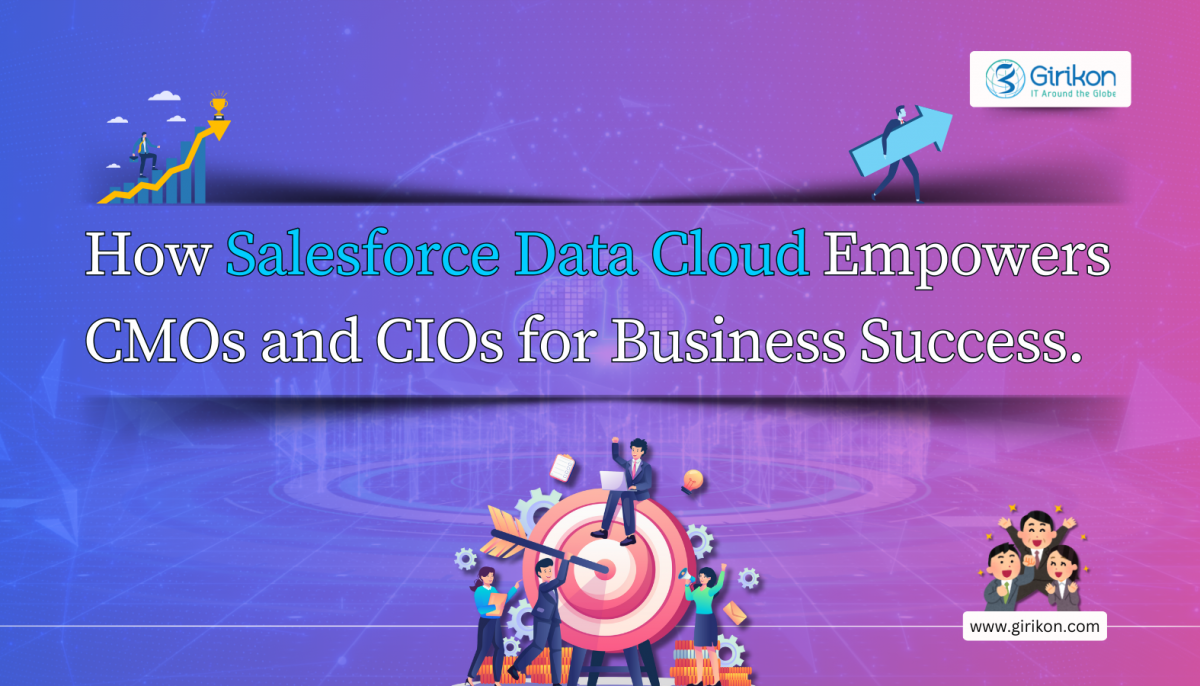Businesses across all industries have realized the significance of integrating a robust CRM (Customer Relationship Management) platform within their business ecosystem. With a powerful CRM in place, organizations can efficiently manage their customer relationships while enjoying operational efficiency by streamlining processes. Though, cloud-based CRM like Salesforce enjoys a great adoption rate by businesses of all sizes, most of them aren’t aware of the different beneficial integrations they could make use of.
One such integration that can boost organizational performance significantly includes the integration of messaging apps with CRM systems and the Smart SMS app is the perfect example of Salesforce SMS integration.
What is meant by SMS CRM integration?
CRM SMS integration happens when your business messaging platform and CRM system are unified via their APIs. With this integration, the two platforms can interact with one another, allowing them to share and sync data. This integration can enable organizations to:
Text Customers directly from the CRM System: For doing this, users need to click on the phone number listed by the customer’s name following which a widget or a chat window will pop up. The customer’s name and the number will get populated automatically in the window allowing users to send messages immediately.
Sync Contacts: With SMS CRM integration, CRM systems no longer have to function in a silo. For instance, if any sort of modification is done in the contacts and custom fields of a CRM system, the changes will automatically get updated in the messaging platform and vice-versa. Some major messaging platforms can enter SMS into a CRM for maintaining additional records and can be useful if dashboards, reports, or machine learning capabilities are built-in within a CRM.
Add SMS to your CRM workflows: Premium CRM systems like Salesforce have robust workflow features like SFA (Sales force automation), email drip campaigns, and more. With such integration, text messaging can be included in the workflows as a trigger.
What Makes Smart SMS App Preferred Choice of Customers?
The Smart SMS app is a robust Salesforce messaging app that is 100% built natively on the Salesforce platform. The app empowers organizations to personalize their communication, streamline workflows, and eventually improve customer service by reaching out to them quickly and with advanced features. Here are some of the unique features that this robust and easily implementable app offers. Let’s take a quick look:
SMS Automation through Workflow: The sending of SMS can be automated by using a simple workflow configuration. By sending automated messages, the workflow can be simplified, which reduces the burden on the users/ sales reps resulting in an improved bottom line.
Send SMS/MMS in Bulk: Users can leverage this feature to send individual or bulk SMS/MMS in a batch of 200 from ListView on button click or using SMS/MMS interface.
SMS scheduler: Sales reps can schedule the sending of messages (promotional, welcome, etc.) to customers based across different geographies and time zone. To schedule the sending of messages at a desired time and date, Sales reps would have to enter the name and the number of the intended recipient along with the date and time. At the scheduled date and time, the SMS automatically gets disbursed without the need for any manual intervention.
SMS Template: This feature can be used to create, modify, and use SMS templates easily by using any of the objects and associated fields.
Final Words:
An SMS CRM integrated platform can be a powerful addition to any business. By enabling teams to leverage the contacts and reach out to them in an automated fashion but with a personalized touch will help organizations to improve their customer service, as well as their bottom line significantly.
The business landscape has become extremely competitive in today’s digital era. Apart from the market competition, evolving customer needs have pushed organizations to prepare for the future. To sustain themselves, organizations are leveraging technology solutions like a CRM (Customer Relationship Management) system to stay ahead of the race. As a cloud-based CRM system, Salesforce continues to be a preferred choice of customers looking to efficiently manage their customer relationship while ensuring operational efficiency by streamlining business processes.
Salesforce with its wide array of features, functionalities and cloud solutions can be leveraged by organizations to resolve their unique business problems. However, sales reps are always in a dilemma as to which Salesforce product to opt for especially between sales cloud and customer service cloud as both of them have objects like contacts, leads, opportunities, cases, etc. in common.
However, the basic difference lies in their functionality, and organizations should make their choice basis their specific business needs. Let’s take a quick look at the features offered by each one of them:
What is Sales Cloud?
This Salesforce product is designed to manage, automate, and analyze the sales processes of an organization thereby increasing the efficiency of the sales team. Sales cloud benefits both sales reps, as well as sales managers by helping them accomplish their tasks with efficiency. Since, the Sales cloud functionality can be leveraged to automate customer communication and other activities such as call logging, sending of emails; record-keeping, etc. sales reps are left with sufficient time for nurturing of leads and closing more deals. Sales managers on the other hand can assess the performance of sales reps while developing a strategy that aligns the processes of sales and marketing teams.
Some of the key Features Offered by Sales Cloud
Contact & Lead Management: This feature helps sales reps to manage leads, contacts, campaigns, and sales frequency to close more deals.
Mobile optimization: This means integration with mobile, which in turn ensures more flexibility. Sales reps can now have easy access to workflows; manage leads easily, clip dashboard, track reports, etc. all at your fingertips.
Reports & Dashboards: Organizations can well manage their business by having access to regular and detailed reports regarding organizational growth, and progress. They can also recognize the insufficiencies to upgrade processes that require the most attention.
Work Process Approval: The Sales cloud interface allows organizations to plan their business in a better way as everything including sales, expenses, and discounts could be availed at one place.
What is Service Cloud?
It is an important business tool that positively impacts customer retention rates as retaining an existing customer is cheaper than gaining a new one. The cloud platform provides integration with numerous communication channels that are present within the service cloud UI, which helps sales reps to serve their customers quicker and better. The knowledge base created acts as a useful source of knowledge, which can help service agents to reduce their response time and train agents quickly. Service agents can provide a quick resolution to customer issues as the cloud platform offers service process automation.
Customer service managers can gauge the performance of service agents by accessing the reports on customer satisfaction. This gives them a fair idea of the training and Salesforce support they would have to provide the agents.
Some of the key Features Offered by Service Cloud
Service Console: Experts handle and manage organizational tasks to help customers better respond to their services.
Chat service: Live Chat is automated, which assists customers looking for solutions.
Customer service: This helps in processing customer queries via social media without looking for other websites.
Knowledge Base: The knowledge base created can help service reps to better understand customer queries and provide a quick resolution to them.
Email to Case: his feature helps in automating email responses w.r.t case submissions depending on the characteristics of the record.
Sales Cloud vs Service Cloud: What Should You Opt For?
Although Service Cloud has a lot in common with Sales Cloud, it does not mean that both the products can be interchanged. Since sales cloud offers features that help in turning a lead into an account, it is recommended for sales-centric organizations. On the other hand, the service cloud is recommended to customer service-centric organizations as it provides features for customer service management and improvement for agent productivity. For organizations having both sales and service requirements, a Sales + Service package is recommended.
Final Words:
These are some of the basic differences between the two cloud platforms that can help you decide which cloud platform to opt for as per your business need. It is prudent to get in touch with a reliable Salesforce partner who can help you with the right solution for your business.
Today, every industry is undergoing digital transformation. Today, forward-looking organizations are becoming future-proof by building their businesses on the foundation of API-led connectivity. Alternatively, organizations that lack APIs are finding it difficult to keep pace in the digital age. In other words, successful organizations are aware of the fact that the more they are associated with an ecosystem of applications, partners, developers, and customer experiences, the more will their APIs grow in value.
Today, as the API economy evolves, more and more organizations are collaborating with other members of the ecosystem to co-create API-based products. Such partnerships are not just mutually beneficial for those involved but also offer value to their combined customers. Consequently, organizations are expected to reimagine value creation by collaborating with their partners as they are endowed with customer-centric thinking. Such an ecosystem that offers value to every participant including the company that hosts the ecosystem, the developers, partners, and ultimately the customer offers a win-win situation.
While there is no dearth of advice regarding APIs on the World Wide Web, companies tend to feel confused with so much information at their disposal during their API journey. In such situations, they can avail MuleSoft consulting from a reputed service provider. Listed below are some best practices that can help organizations cultivate a thriving API ecosystem:
Begin with Customer Experiences: Irrespective of whether the end-user is your customer, developer, or an internal stakeholder, it’s important, to begin with defining the best possible customer experiences. This strategy which is known as ‘outside-in strategy’ depends on customer needs and preferences and takes into consideration developers, direct customers of API, and the end-users the developers serve. This approach requires the collective imagination of both IT and business teams to come up with next-gen customer experiences.
Get Hold of Ecosystem Principles: As organizations, today are using APIs as building blocks for creating an ecosystem and reusing the same in the API economy for future growth, they must follow the following ecosystem principles to unravel innovation:
Organizations should change their outlook of considering API as products and services, which acts as a hurdle to unlock new sources of revenue and allow developers, partners, and others at the door to co-create value.
As organizations develop API products, they should be ready to experiment, fail, and ultimately establish their API capabilities as the ecosystem evolves rather than getting bogged down with questions that might overwhelm them.
Apart from extensive experimentation, organizations should have a data-driven mindset and a pathway for management and operations. Leaders should size their investments for productivity, revenue, and customer experience to drive maximum value.
Define an API Business Model: It’s important to define a monetization approach for creating a sustainable API ecosystem. This approach can be created basis the value delivered by API and the data to different audiences. The API business models are of two types i.e. internal and external. For internal API products, organizations should assess their API investments that are centered on reduced operational expenses, legacy modernization, and improved efficiency. However, for external API products, organizations should contemplate business models that can open up new streams of revenue and new business opportunities.
Co-create Value by Engaging with Partners: Once organizations identify their customer experiences and outcomes, it’s important to reunite them against your company’s core competencies.
Design and Deliver API Products: Organizations should then decide on the API design followed by developing and securely deploying them using an API lifecycle management solution for a thriving API ecosystem. Effective API products can help drive a higher adoption rate. Developers can use already available resources to develop such APIs rather than spending time on building them from scratch.
API Consumption: For ensuring the success of their API investment, organizations should put efforts towards creating strategies that incorporate well-thought-out adoption campaigns accompanied by appropriate customer education and marketing. The API lifecycle management solution adopted by organizations should provide scope to engage their developers and partners in their branded experience.
Observe, Measure, Reiterate, and Reprise: Organizations should monitor their business metrics thoroughly while stay close with the members of the ecosystem to focus on achievements, spot glitches, bring forth opportunities, and repeat as required. They should contemplate making improvements by tracing errors, metrics in use, and other desired outcomes. Leaders should also complete the API portfolio, and take note of historical trends to assess which API’s to be promoted or retired.
Quick Wrap-up:
To design an effective API ecosystem, organizations should consider partnerships, redefined business models, and an enhanced pace of development. Organizations should establish a centralized model of governance to ensure efficient implementation of API strategies while monitoring the progress of the ecosystem, and finally measuring the effect of investment on the bottom line of the organization. So, whether you are looking to build an API ecosystem or already have one, it’s better to seek MuleSoft consulting services from a reliable service provider.
Salesforce undoubtedly is one of the most powerful and widely adopted CRM systems across the globe. Besides offering a wide array of features, functionalities, and components, the robust CRM offers several tools, platforms, and add-ons that function in association with each other to ensure the effective functioning of the CRM. One such important platform is the CPQ, which is leveraged by organizations to maximize sales efficiencies and generating greater revenue.
This robust platform is one of the most adaptable software’s available and can ramp up your team’s ability to streamline the sales operations while enabling them to furnish precise quotes at lightning speed. However, to make the most of this software, it’s important to focus on implementing it effectively within your business ecosystems. CPQ implementation might appear to be a bit tricky for people using it for the first time but to realize the strong potential of this platform, it’s important to take note of few important things.
Tips to Successfully Implement Salesforce CPQ?
To ensure successful implementation of this powerful cloud-based platform, it is important to go through a reliable Salesforce CPQ guide as the software helps in dealing with matters about pricing directly. Let’s take a quick look at some of the significant tips for successful CPQ implementation:
Make the Most of Opportunities: Customer experiences created as a result of services provided by Salesforce CPQ is usually consistent across all platforms and thus play a significant role in sales processes. Apart from this, the platform can also help in shortening the sales cycle thereby creating a win-win for the sales teams, as well as customers. It is therefore important to grab the opportunities that come your way and the ones that could be handled using Salesforce CPQ. You can cater to your customers in a better way by understanding the sales requisites of your organization and providing them with personalized services such as guided selling, automated selling, and more. Salesforce CPQ can be implemented successfully by taking into consideration all the opportunities.
Understanding Your Enterprise: Implementation of Salesforce CPQ is concerned primarily with the sales department yet it is essential to look at the bigger picture as to how the implementation will affect the supply chain system of your organization along with the experiences of your customers w.r.t your company.
Determining Key Business Requirement: According to any Salesforce implementation guide, implementing a new platform or tool within your business ecosystem calls for external and internal modifications. It is important to determine the crucial business requirement before installing Salesforce CPQ. Apart from this, it also essential to look into several other aspects such as the future goals of your company, the current pricing model, product catalog, and the pricing rules. It is also recommended to consider product-related details that are supposed to be included in the platform and how you would manage the current, as well as the existing database.
The positioning of CPQ in your Business Processes: Successful implementation of Salesforce is possible if you can figure out where exactly it will fit in the existing business processes of your organization. It is important to browse all the crucial data stored on different platforms and import the same before the implementation process begins. Moreover, you should comprehend how the implementation of Salesforce CPQ will impact the existing tools and platforms as Salesforce CPQ integrates easily with multiple applications and systems. Make sure none of your existing processes are hindered due to the implementation of CPQ software, and if any issues do arise, it’s better to get in touch with a reliable Salesforce consultant.
Be Prepared for Change: However reliable your business processes are and how smooth your Salesforce CPQ implementation has been, certain changes are bound to happen when it comes to the functioning of your sales department. It is important to acknowledge and adapt to the change by planning well in advance.
Key Takeaways:
Salesforce CPQ is unquestionably one of the most flexible tools that can improve the ability of your sales team to streamline sales operations. However, the real benefits of this software can be realized by ensuring its proper implementation by following the aforementioned tips and best practices. Engaging with an experienced and certified Salesforce implementation partner during the CPQ implementation journey also makes sense.

 +1-480-382-1320
+1-480-382-1320 +44-7428758945
+44-7428758945 +61-1300-332-888
+61-1300-332-888 +91 9811400594
+91 9811400594


















